INTRODUCTION
On the road toward chess mastery, a chess player acquires knowledge about numerous attacking mechanism and mating patterns.
For instance, every strong player is familiar with the typical sacrifice of the bishop on h7, typical exchange sacrifice on h5 and other similar attacking manoeuvres.
However, one attacking pattern, in particular, has become especially famous throughout the centuries. It is rather well known because it was named after the player who originally played it in the 18th century.
Probably any Russian schoolboy could tell you the name of this manoeuvre even if you woke him up in the middle of the night.
Therefore, if you ever dreamt about travelling to Russia and waking up Russian schoolchildren in the middle of the night, it is probably time that you too get acquainted with Legal trap.
LEGAL MATE?
Legal trap is an attacking trap with which a player sacrifices his queen in order to deliver mate to the enemy king (or to gain a decisive advantage; more details in the subsequent section).
Legal trap was discovered in the 17th century by the strongest chess player of those times, the French virtuoso Francois Antoine de Legall de Kermeru (also known as Sire de Legal).

During this period, Paris was the chess capital of the world and the strongest players of the world gathered regularly at the famous Cafe de la Regence and played against each other.
In one of those games, against an unknown opponent, Legal discovered a fantastic idea which would later become an integral part of the chess heritage.
Let us take a look at the moves and the key point of the game. Legal was playing with the White pieces.
1 e2-e4 e7-e5
2 Ng1-Nf3 d7-d6
3 Bf1-c4 Bc8-g4
4 Nb1-c3 g7-g6
Let us pause and take a look at the diagram position. Black has already violated two important opening principles; he moved his pawns instead of pieces on moves 2 and 4, and he developed his bishop prematurely.
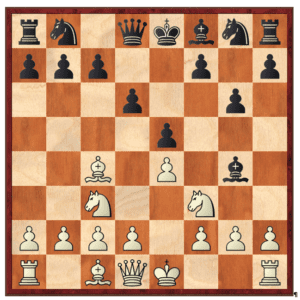
White is able to punish these mistakes with the help of a great move that Legal discovered:
5 Ng3xe5!!
An amazing discovery. White simply allows Black to take his queen in a move. Naturally, the offer is too attractive not to be accepted:
5… Bg4xd1
But in fact this allows White to deliver a checkmate in two moves:
6 Bc4xf7+ Ke8-Ke7
7 Nc3-Nd5 mate
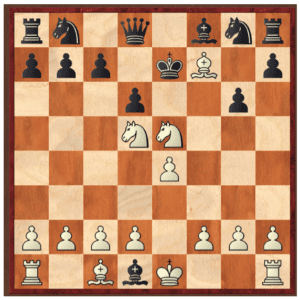
Very picturesque. White mates the Black king in the middle of the board and proves that in chess, mind often triumphs over matter.
LEGAL MATE OR LEGAL TRAP?
The above diagram represents the basic position of the Legal trap. However, stronger players might have noticed that Black is by no means forced to grab the White lady when the opportunity arises.
Let’s once again take Legal game as an example. His opponent could have refused the queen offer on move five, and captured the knight on e5 instead:
5… d6xe5
This would have allowed Legal to demonstrate another point behind his idea. The jump of the White knight, apart from threatening mate, also discovers the attack on the Black’s bishop. Therefore, White can now simply take the bishop with his queen:
6 Qf1xg4
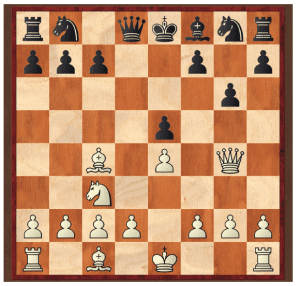
In the resulting position, White is a pawn up and has a large lead in development, as he already has three pieces in play in contrast to Black’s none.
Therefore, from the practical point of view, the diagram position should also be technically won. But even so, it is better for Black to enter such a position then to allow immediate checkmate.
Technically speaking, it is not fully correct to call the manoeuvre Legal mate, because Black can refuse to take the queen. Therefore, it is more precise to refer to the queen sacrifice as to the Legal sacrifice. Some authors also call it Legal Pseudo Sacrifice, because Black can’t really accept it, as demonstrated above.
Strictly speaking, whenever one mentions Legal name it should be clear what he refers to. All the terminology aside. For this reason, for the remainder of this article, we will stick to the Legal trap expression.
DIFFERENT VARIATIONS OF LEGAL TRAP
Ever since Legal ventured the queen sacrifice, many players have followed his footsteps and provided us with numerous examples of Legal trap in practical play.
Although the basic idea always remains the same, the features of every position are slightly different and the resulting consequences are not always identical.
Therefore, there are many different forms in which Legal trap can appear. We will examine four main variations of Legal trap on a number of model games.
Knight delivers the checkmate
The first variation of Legal trap was already demonstrated in it’s most primitive form in the Legal original game.
However, that game was a predecessor for many subsequent games in which knight delivered the checkmate after slightly more complicated opening phase.
As an example, let’s take a look at the game between two British amateurs, A. G. Essery and F.H. Warren, from the year 1912.
The game started with the Danish Gambit:
1 e2-e4 e7-e5
2 d2-d4 e5xd4
3 c2-c3 dxc3
4 Bf1-c4 d7-d6
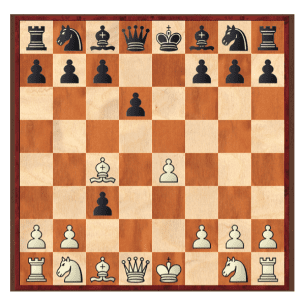
This gambit is not fully correct but is very dangerous. If Black takes on b2, White gets a large lead in development.
5 Nb1xc3 Ng8-f6
6 Ng1-f3 Bc8-g4
7 0-0 Nb8-c6
8 Bc1-g5 Nc6-e5?
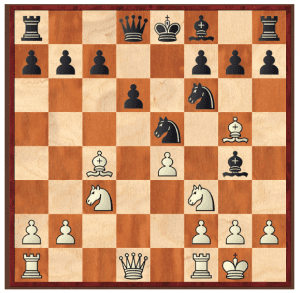
White’s last move has set a trap into which Black falls. The knight move allows Legal mate.
9 Nf3xe5! Bg4xd1
It has to be mentioned that Black’s best response is declining the Greek Gift with 9… d6xe5, but then White captures the bishop on g4 and remains a piece up.
The text move allows the mate:
10 Bc4xf7+ Ke8-e7
11 Nc3-d5 mate
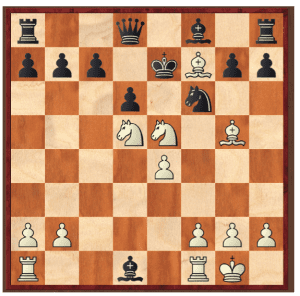
Thus, Legal mating picture occurs. It is noticeable that the diagram position is different from the position that occurred in the original Legal game; the key role is played by the bishop on g5 which pins the Black knight on f6 and hinders it from capturing back the knight on d5.
Bishop delivers the checkmate
Instead of merely pinning the knight on f6, on some occasion the bishop can have a much more glorious career on the square g5 and actually deliver the checkmate to the Black’s king.
Such a scenario usually happens when the Black knight from f6 gets exchanged for the White knight on c3.
For instance, the game by Jean Taubenhaus, a Polish master from the end of 19th and beginning of the 20th century, played in simultaneous exhibition in 1887, features this theme:
1 e2-e4 e7-e5
2 f2-f4
The King’s gambit was definitely the most popular opening in the 19th century. Nowadays, many antidotes have been discovered, but it is still used sometimes as a surprise weapon on the highest level.
2… d7-d6
3 Ng1-Nf3 Bc8-Bg4
4 Bf1-Bc4 Ng8-Nf6
5 f4xe5 Nf6xe4
6 Nb1-Nc3 Ne4xc3
7 d2xc3
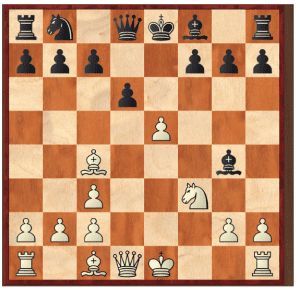
The exchange of the knights takes place. White loses an important attacker and is unable to deliver mate on d5, but on the other hand, Black loses an even more important defender.
7 … Nb8-Nc6
8 0-0 Nxe5?
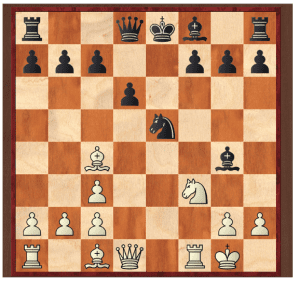
Fatal mistake. Now all the prerequisites for Legal mate are met:
9 Nxe5! Bxd1
Once again, declining the sacrifice loses a piece for Black, but it was his best option.
10 Bxf7+ Ke7
11 Bg5 mate
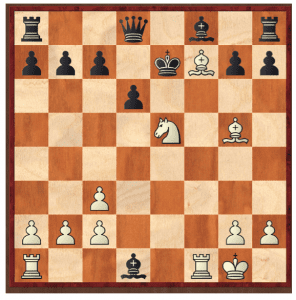
The hitherto bishop, which has been sleeping on c1 until now, wakes up and delivers the fatal blow.
Legal mate leads to decisive material gains
Finally, we will examine the third variation of Legal trap.
In this variation, the idea of the Legal manoeuvre is the gain of material. When Black’s king is hemmed in by his own pawns, pieces and queen, a check by the bishop might force him to give up his queen in order to prevent the checkmate.
If this sounds too complicated, perhaps it is best to examine a trendy opening line of the Queen’s Gambit Declined in which this form of Legal trap can appear. (Note: In this game, it is Black who takes the advantage of the queen sacrifice).
1 d2-d4 d7-d5
2 c2-c4 e7-e6
3 Nb1-Nc3 Ng8-Nf6
4 c4xd5 e6xd5
5 Bc1-Bg5 Nb8-Nd7
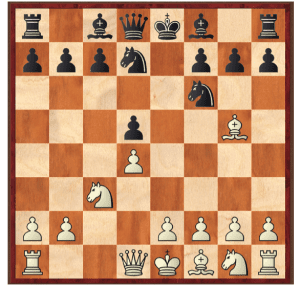
This variation is known as the Orthodox variation of the Blackburne’s variation of the Queen’s gambit declined (quite a long name for mere 5 moves, don’t you think).
It has been played a million times, but it is not immediately clear what happens if White simply takes the knight on d5.
Let’s take a look:
6 Nc3xd5? Nf6xd5
7 Bg5xd8 Bf8-Bb4+
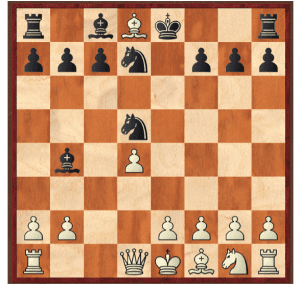
The point of Black’s play. White is unable to do anything about the check and has to interfere with his queen.
9 Qd2 Bb4xd2+
10 Ke1xd2 Ke8xd8
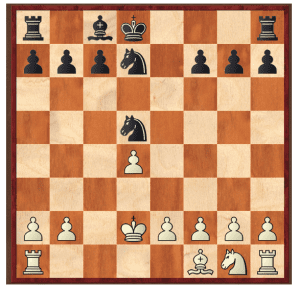
At the end, Black has won the piece and with he should also win the game.
DON’T GET CARRIED AWAY WITH LEGAL TRAP
We will conclude this article with a word of caution.
Legal trap is the attacking pattern that every chess player should know because it teaches us the dangers of prematurely pinning the knight toward the queen in the opening and of disobeying basic opening principles.
Sometimes, you will get the opportunity to deliver it in the real game, but most often more experienced opponent will not allow it because he will play healthy, logical chess, against which winning with the help of the quick tricks won’t be possible
Not only that; blindly and intentionally going for Legal mate can bring you serious trouble.
For instance, consider the following diagram for the moment.

In this position, if White tries the move Nf3xe5, Black doesn’t capture the queen, but replies Nc6xe5, defending the bishop on g4 and winning the piece for Black.
Therefore, I hope you will remember the name of Sire de Legal, appreciate the greatness of his brilliant queen sacrifice and use the opportunity to employ it if you ever get one.
Nothing more, nothing less.

